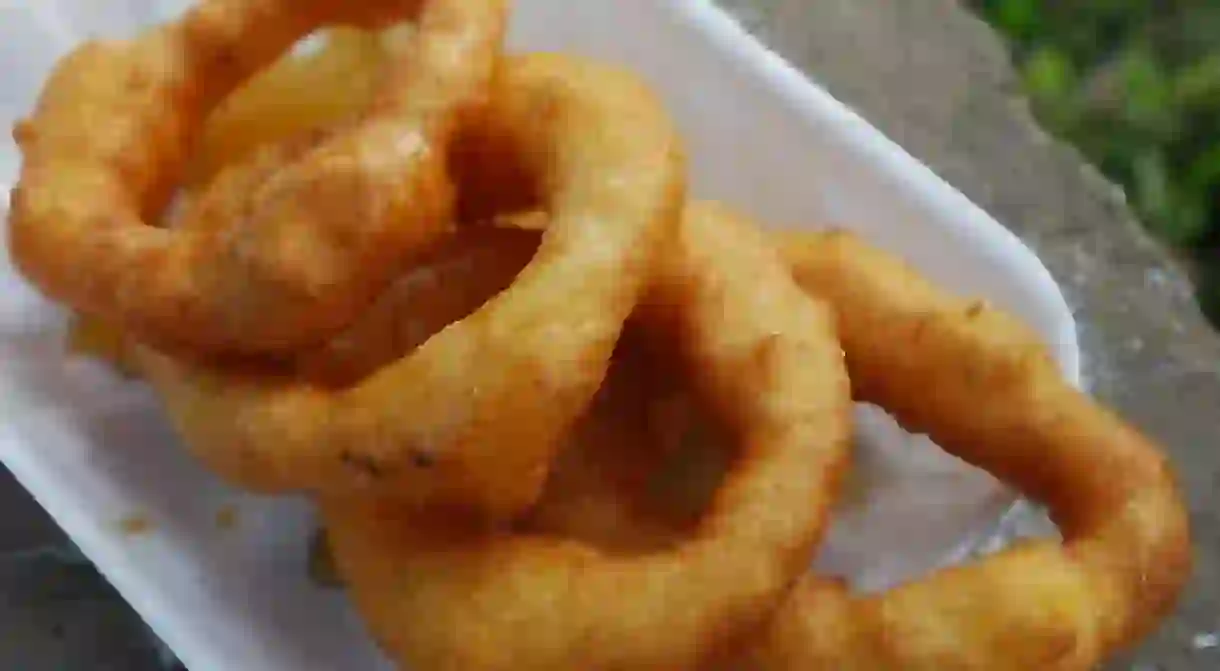Picarones: What to Know About Peru's Best Late-Night Snack

The smell, the sounds and the flavor – you’ll love it all after trying your first picarone, and we guarantee it won’t be your last. Peru is known for being the gastronomical capital of Latin America, and ceviche is the dish that usually gets all the attention. While ceviche is undoubtedly Peru’s most recognized food export, picarones are Peruvians’ favorite late-night snack. When the picarone vendors come out, there’s always a crowd. Here’s everything you need to know about this Peruvian guilty pleasure.
Take a dough of sweet potatoes and squash, shape it into a donut, plop it into a vat of boiling canola oil, and watch the sizzling magic happen. It’s the dessert of the people, because you won’t find it in any restaurants, but right out on the streets, along with ice-cold chicha morada and papa rellenas. The cries of, “Peeecarone, peeecarone, peeecaaaaronezzzzz,” yelled by the vendors, will soon bring you to a ravenous frenzy and experiencing uncontrolled salivation for this Peruvian donut.

A Brief History
The Spanish introduced the buñuelo, which is a fried dough ball, to Peru during the colonial period, but it quickly lost its favor among Peruvians because it was expensive to make. Shuffling some of the ingredients around, Peruvians came up with picarones, which, because they use local ingredients that are abundant in Peru, were much cheaper to make. Truly the snack of the Peruvian people, picarones continue to thrive in the streets of Peru, costing only about 2 to 4 soles (60¢ to US$1.20).

Where to Find Them
Inside or just outside the plaza de armas of almost every Peruvian city, you’ll find picarones being fried up – just ask someone where to find them. You’ll also find them in touristy spots, but they’ll be slightly more expensive. If you’re in Lima, head to Barranco’s puente de los suspiros or Parque Kennedy; these are probably the most scenic places to enjoy picarones in Peru. Even if you’re in some small, no-name pueblo in the mountains, more likely than not, there will be some picarones nearby.
How Do They Taste?
When made right, they are crispy on the outside and a little bit fluffy on the inside. They are similar to donuts, but more airy and light and, unlike donuts, they are served with a homemade syrup that is like maple syrup in terms of its viscosity and stickiness, but uses ingredients from Peru.

How to Enjoy Them
You must do it just like the Peruvians: pull up a plastic stool and take a seat. Order yourself a chica morada (a sweet Peruvian drink) while your picarones are frying and then enjoy them right there on the street. The food of the people needs to be eaten right where they’re made – on a street corner in Peru. Smother the picarones in the vendors’ homemade syrup and tuck into this Peruvian delicacy.













